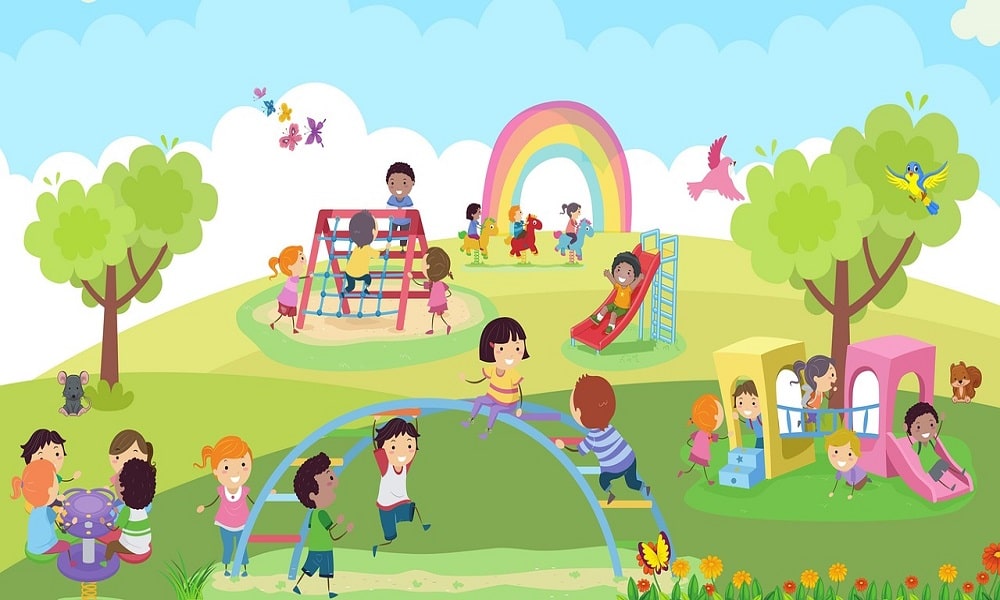Building a playground from the ground up is a significant project. For schools and daycares, it can be a substantial undertaking from a financial perspective. Although the prospect of children playing freely outdoors may alleviate some of this burden, it won’t reduce the overall costs.
Fortunately, there are strategies to help maximize upfront investments to ensure the playground is utilized for years to come. Here are three considerations for schools and daycares to use their investments wisely for long-term impact.
1. Know Your Needs
With any type of construction project, before you break ground, you want to have a set plan in place. Knowing what the needs are of the school or daycare can ensure that you’re building a play area that the children will love for years to come.
For playgrounds, you’ll first want to consider the age ranges of the children attending the facility. For elementary schools, children need to be engaged across a wide range of modalities and difficulties. A timid first grader needs to have a fun experience, just like a rambunctious fifth grader. Different types of playground equipment will need to be purchased and built in order for all students at the school to be challenged while still having fun.
Daycares tend to have a smaller age range, meaning they can adjust the equipment based on their specific needs. For younger toddlers, bucket swings, small slides, sensory experiences, and sandboxes can be good options.
Additionally, you’ll also need to think about space and how big you want the playground to be. If you’re envisioning that the daycare will expand over the years, having one slide isn’t going to cut it. Or, perhaps you only have enough funding for phase one of the project. In both instances, consider the available space and plan out how you can best take advantage of it, knowing that you may want to consider growing in future years.
2. Include Multiple Types of Play
Another way to maximize your outdoor play investment is to design with multiple types of play in mind. Not every child is going to be enthralled by a swingset. Some children may prefer to climb on ropes or spin on a merry-go-round. Designing for multiple types of play ensures that all students or daycare participants will be excited about their designated outdoor play time. The last thing any teacher or guardian wants to hear is “I’m bored” the moment they take their outdoor break!
If space permits, consider creating zones for different play areas. An activity zone can include swings, ladders, and monkey bars. A sensory zone can have sandboxes, water installations, and sensory activity boards. A quiet zone can be helpful for children who feel overstimulated, providing them with a break. A shaded area with some seats or a small garden can be just the thing some children may need.
Multiple play zones can be important from both a safety perspective as well as a developmental perspective. Larger schools want to have different zones based on the appropriate age group. This can be helpful for teachers to keep an eye on their entire class. Different zones also help with inclusivity, ensuring that children of all abilities feel like they can engage and participate in some sort of activity.
3. Think Eco-Friendly
Schools and daycares that are looking to build a playground for years of enjoyment should think about using eco-friendly materials. These playgrounds are built to minimize environmental impact while also maximizing long-term use. There are numerous options to seamlessly include eco-friendly materials into your project.
To start, think about surfacing material. Instead of using rubber or plastic-based products, consider engineered wood fiber, pea gravel, wood chips, or recycled rubber mulch. These materials are durable and have a lower environmental impact.
Second, see if there’s a way to incorporate natural elements into your design. Instead of cutting down trees to build the play zones, can you find a way to work around them? Or is there a small plot of land that would be nice for a garden space with picnic tables? These types of elements can also be teachable opportunities for schools and daycares. Children can be recruited to help plant different items in the springtime and follow their progress throughout the season.
An easy addition for an eco-friendly space is to set up recycling and compost bins. Clearly labeled bins will help educate little ones about what goes in the trash and what can be recycled or reused for planting. This is a relatively inexpensive add that will help keep your playground well-maintained for years to come.
4. Maintain and Inspect Regularly
Speaking of maintenance, for a playground to get as much use as possible, it needs to be regularly inspected and maintained. Children can do quite a number on a play structure. From a safety standpoint, it’s important for equipment to be inspected for any potential hazards. Loose screws need to be tightened and sharp edges need to be fixed to eliminate any potential accidents.
Other maintenance, such as trimming the shrubs, cleaning any debris, and filling and leveling any surfacing, should also be conducted periodically. For schools, a PTA can be a great way to start a playground team and get the parents involved in taking care of the play area. Daycares may also be able to enlist some parents or guardians who are willing to spend a weekend morning planting flowers or raking leaves.
These communal acts aren’t just free labor, but they help establish a sense of belonging. Parents from the school can meet and share commonalities, and daycare parents and nannies can swap child-rearing stories and tips. Moreover, involved community members will be proud of their work and will want to continue maintaining the play area for future generations.


